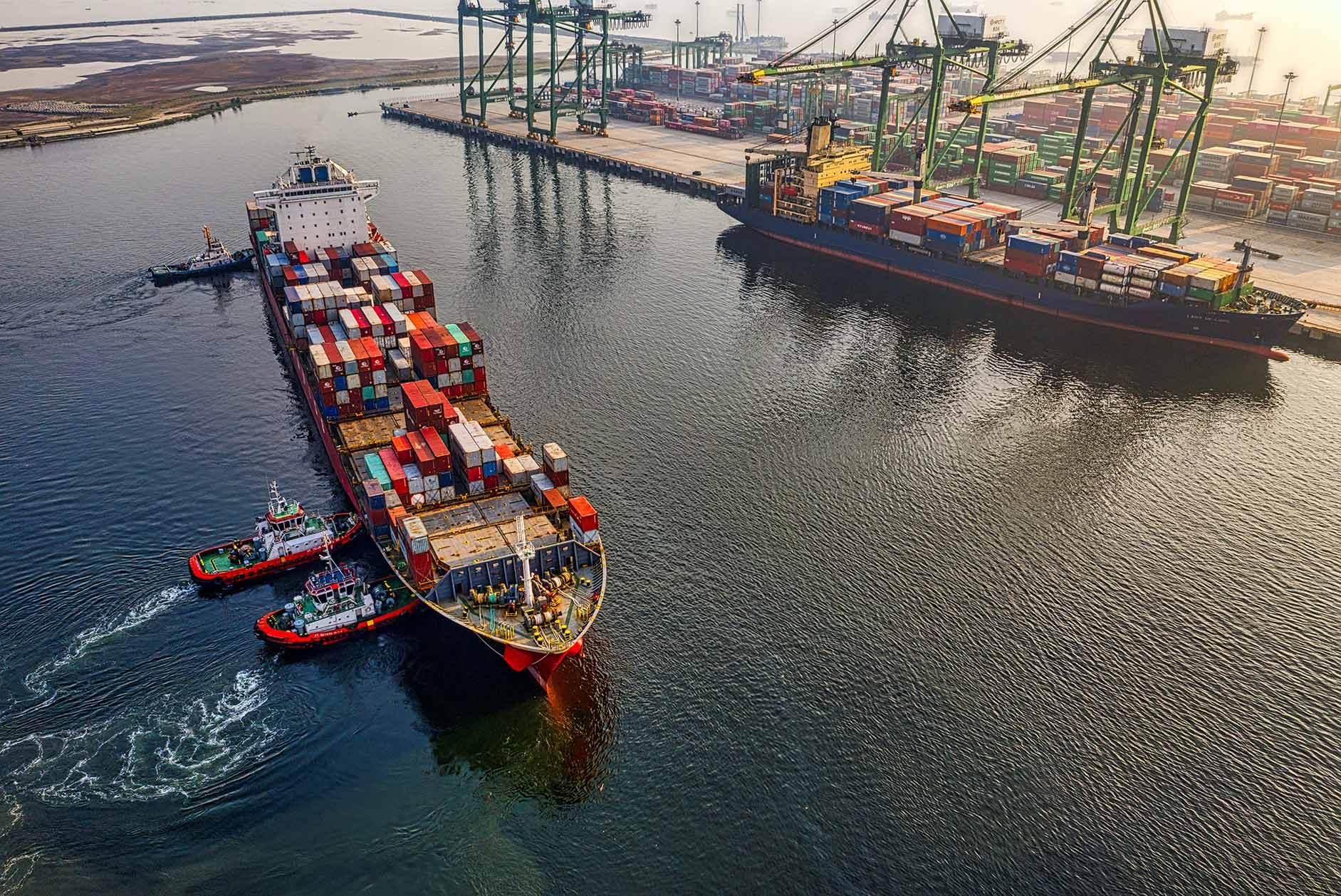BLOG
Telecom26 blog
Private networks at sea - the whats, whys and wheres

But first a quick recap on private networks…
Vodafone’s definition of Mobile Private Networks can be found here. Basically a Private Network (PNs – also known as ‘non-public networks’ or NPNs) is a “dedicated business network that allows businesses to interconnect people and things using 4G or 5G technology” and also “provides an ultra-secure network solution that can support businesses moving to Industry 4.0”.
Mobile Private Networks differ from public mobile networks in that they provide “private reserved coverage that is subject to agreed performance and local, protected data flow”. Such networks are typically deployed in specific locations – on land or at fixed points offshore. However, there is an alternative to consider.
When we talk about a private cellular network, we mean one that is isolated from the public world, but for which we can unlock roaming and control the services available. But, in addition to the classic characteristics and definition of a private network, we take it a step further – and move it to a ship!
So, in this context, we mean a private network at sea, which is a complete solution to provide onboard coverage, even while the vessel voyages across the open ocean. Here, we provide SIMs or eSIMs to enable devices to connect to the network, but we also enable visiting (“roaming”) SIMs to connect, at the discretion of the private network operator, and through the control that we offer from our core. If you want to allow roaming, you can. If you don’t, it will be prohibited.
As a maritime operator, Telecom26 is now building out mobile private networks at sea for a number of customers as part of our Cellular At Sea service.
As a result of our own experiences, and those of our customers, we firmly believe that vessels of all shapes and sizes should have their own mobile private networks at sea in the same way businesses on land have private terrestrial networks over fibre, wireless or satellite on their business premises.
Mobile private networks at sea enable ships to have control over their own networks and billing - as well as providing cruise ships with another source of revenue from passengers who would be able to use their domestic SIMs on the ship’s mobile private network.
Mobile Private Networks At Sea
A private network at sea is a private cellular network on a ship. They are essentially closed networks that are deployed in a specific location.
There are several different approaches to enabling connectivity in the offshore maritime environment. For example, one is to provide remote connectivity via satellite and to allow local devices (and people) to connect to some form of router. This has benefits, but it’s not the most comprehensive approach. Typically, such cases are limited in terms of access and are restricted to data.
Today many private networks at sea are run using 3GPP-based mobile technologies. This means they can use 2G, 3G, 4G or 5G radio access, just as in public (what we call “macro”) cellular networks. As a result, devices that can work on public networks – a standard mobile phone can, in theory, work on a private 3GPP network, provided they are equipped with SIMs.
In practice, this isn’t so straightforward as, currently, there is no standardised way of managing access. Consequently, most private networks only work with specific devices and SIMs – even though these may use the same SIM-based authentication and technology as they would in a public network. They can’t easily admit new devices or let those that are connected move to other networks, even though they are equipped with SIMs. There is no current standardised way of enabling roaming into private networks – a problem that we have solved for the industry
Exploring private networks at sea, maritime connectivity and how Telecom26 can help
A more flexible alternative is what we call a “Cellular at Sea service”. In this case, we provide a complete, private full-service mobile network on-board for 4G, 3G and, soon 5G connectivity. This gives two additional benefits. First, voice and SMS can be enabled alongside data services. Second, complete control over the network is provided, allowing owners to admit users. As a result, a complete mobile service can be offered to support crew welfare, passenger communications, as well as for IoT devices.
So, in our terms, the private network at sea is self-contained, using dedicated radio access infrastructure for 3G, 4G and future 5G, and powered by our mobile core.
The limit to coverage is defined by the footprint of the vessel.
The coverage provided in the private network at sea means any approved device can communicate with others locally. And, because they are connected to our core via satellite, they can access any other global service – for outbound and inbound voice and data communications.
And, there is also the additional option to switch to near-shore networks when they are in range – saving bandwidth and reducing satellite costs.
So, any IoT device or mobile phone can be provided with a physical SIM or eSIM profile that enables it to be authenticated and to access the network. The coverage provided in the private network at sea means any approved device can communicate with others locally.
First, there is a growing trend for the adoption of digital processes for managing vessels and the collection of remote data is important to support this. Second, freight and cargo contain a growing number of IoT monitors, so that goods can be tracked, and the status monitored. Container management is hugely important – and IoT devices equipped with SIMs are key to enabling more effective tracking and management, through the connectivity they unlock.
Our cellular private network at sea service enables all these devices to connect while at sea – under your control – so that you can provide mobile services for your crew, as well as for on-board IoT devices.
Our experts work with you to deliver the complete private network at sea service, with a turnkey package that matches the requirements of ships, crews and devices. It is also fully compatible with existing satellite systems, so deployment is non-disruptive and augments existing communications capabilities, while delivering the benefits of on-board cellular for crew welfare and devices connectivity.
If you’d like to discuss your maritime communications and Private Networks at Sea requirements please Get In Touch.
Our maritime connectivity team will be attending Posidonia, the international shipping exhibition in Greece from 6-10 June so please Get In Touch if you’re going too and would like to meet up.



